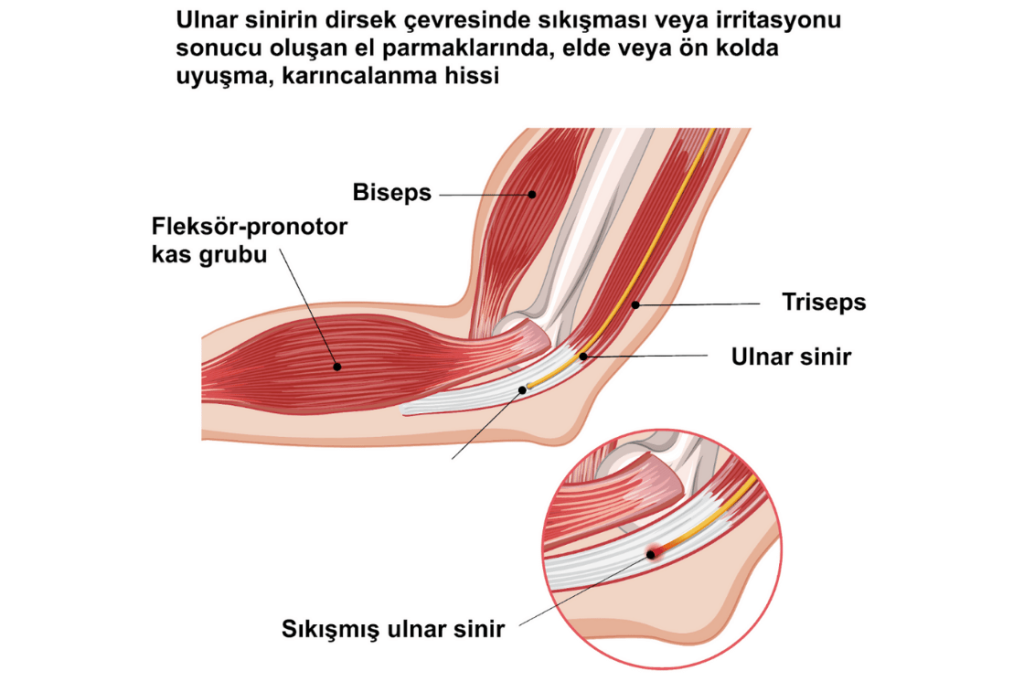Cubital tunnel syndrome is a nerve compression condition that occurs when the ulnar nerve, which passes through the inner side of the elbow, is compressed (squeezed). The ulnar nerve controls the sensation in the 4th and 5th fingers (the ring and pinky fingers) and some of the small muscles in the hand. At the elbow level, it passes just behind a bony prominence called the “medial epicondyle” (often known as the ‘funny bone’). Compression within this narrow tunnel eventually leads to signs and symptoms.

Patients typically present with complaints such as numbness in the hand, tingling in the fingers (especially the ring and pinky fingers), pain at the elbow, and weakness or loss of strength in the hand muscles. Symptoms can be aggravated by keeping the elbow in a bent position for long periods (for example, while sleeping or working at a desk).
In the early stages, treatment is possible with positional changes of the elbow, night splints, physical therapy, and nerve gliding exercises. However, surgical intervention (surgery) may be necessary if symptoms progress, or if muscle wasting (atrophy) or loss of strength begins.

Duration of Surgery: 30–60 minutes
Type of Anesthesia: Nerve block (brachial plexus block) or general anesthesia
Surgical Method: Releasing the area where the nerve is compressed (decompression) If necessary, the nerve may be moved to the front (anterior transposition) or placed just under the skin (subcutaneous transposition)
First day: 2–4
First week: 2–3
After 2nd week: 0–1
Discharge may be on the same day, or a 1-night hospital stay may be required.
First 2 weeks: Elbow movement is limited; suture (stitch) and wound care are performed
After 2nd week: Controlled movements are initiated
6th week: Signs of nerve healing are monitored, supported by exercises
3–6 months: The nerve healing process is completed (improvement in sensation may take time)
First dressing change: 2nd day
Wound check: 1st week
Suture removal: 10th day
In some patients, symptoms decrease quickly. However, in cases of long-standing nerve compression, full recovery may take several months.
A small incision (cut) is made and closed with aesthetic sutures. The scar will fade and become less noticeable over time.
With proper patient selection and early surgery, the success rate is 85–95%.
If muscle wasting has begun, the nerve's capacity to heal is reduced. Therefore, surgery is recommended without delay.
1–2 weeks are recommended for desk jobs, while 4–6 weeks are recommended for jobs requiring active use of the hand.